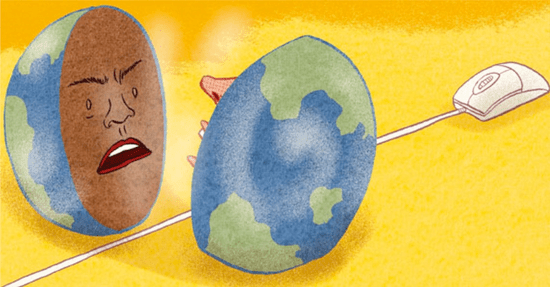We’ve heard a lot about the “digital divide” — the less privileged drifting away from information and opportunities, the broadening gap between the rich and the poor, worsening intergenerational conflicts and all that. Sure, digital divide gives rise to the aforementioned issues and more, but this article hopes to explore a perhaps less-discussed matter in this digital era: a cultural divide.

With advancements in technology, geographical separation takes less and less meaning. Fashion, music, films, and sports are shared all around the globe. Here in Korea, I am currently binging Grey’s Anatomy on Netflix. Meanwhile, on the other side of the world, Minari is celebrating its Oscar nominations for sharing the history of the American dream chased by early Korean-American settlers in Arkansas. The entertainment industry provides us an easy way to gain more understanding of other cultures we have never physically visited. In particular, the fact that content in digital forms spreads further and quicker means that different geographical regions share cultural trends and experience similar cultural phenomena at the same time.
But while technology brings geographically separated societies together, ironically, societies occupying the same geographical area are separating into those who live in the digital world and those who do not. Memes and trends become an inside joke for people who are active online. Some people take on a different personality, and become a person that doesn’t actually exist in the “real” world. Even within the digital world, different online communities and social media platforms are forming cultures of their own. For those who either do not have access to technology or choose not to have an online presence, it would be like having an entire parallel universe they are not aware of.
The digital divide and technological advancements have always gone hand in hand and the issue of a cultural divide has perhaps therefore been overlooked for a long time. But the worsened disparity due to COVID-19 has brought the issue back to light. I have no intentions of undermining the societal issues of digital disparity in the COVID-19 era, but it is worth mentioning that we sometimes forget how much cultural enrichment really changes the quality of our daily lives, too. Imagine being in quarantine or lockdown without Netflix and YouTube. Imagine not knowing what anyone is ever up to because you don’t have Instagram. People make jokes about the virus all over the internet and share their own experiences, which sometimes really do make things easier — but imagine missing out on all that. Knowing that you cannot be a part of a new culture, nor enjoy the existing forms of cultural entertainments could easily bring about a sense of loneliness and disconnection.
Some of us, while recognizing the existence of the problem, may have neglected it because it’s not something we can easily empathize with, and — let’s face it — we like technology. So perhaps Clubhouse could be a good real life example to teach the “privileged” about exclusion. Clubhouse is a rising social media platform, exclusive to those with an invitation from someone who is already a member. Additionally, it is currently available only on iOS devices, meaning you must have an iPhone or an iPad to download the app to start with. Up until now, those who were fortunate enough to have access to digital resources could always choose whether or not be a part of a certain trend. However, now that many are unwillingly “left out” of this internet craze, there are wild complaints about how the app is being “unfair” especially for Android users. Funny, because the digital world has never been fair in accessibility.
Sure, the digital era brought different parts of the world together, and has made our daily lives convenient. In fact, it actually includes some of those who were excluded in the past — audio descriptions on Netflix improve movie experience for the deaf, and those who have difficulties getting around can enjoy online concerts in their bedrooms. However, the last thing we should do is to dismiss the negatives just because of all the positives. Ironically, this problem can only be solved with an even further advancement in technology — advancement motivated by a recognition of a problem, and not by money-making. Only through easier and less expensive access can we make our two universes — one behind a screen, and the other in front — come together.

